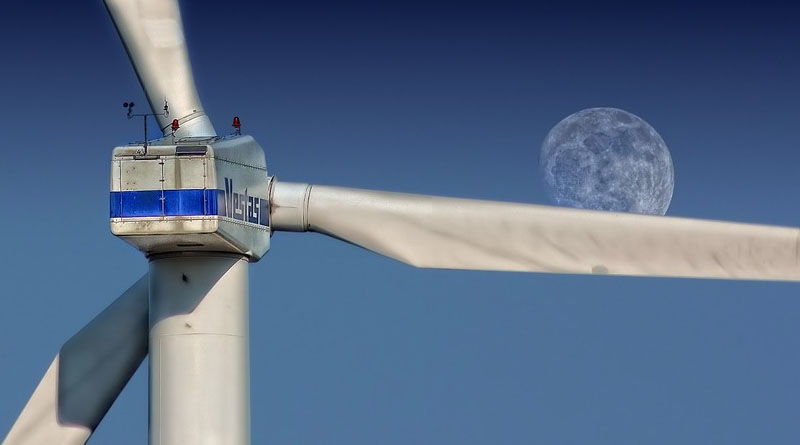FUTURE OF UK ENERGY: GREEN, CLEAN & SECURE?
Europe’s largest conservation charity, the RSPB, has launched a new report showing how the UK could transform its energy system and meet its 2050 climate targets in harmony with nature:
- Using pioneering mapping approaches, the RSPB has assessed whether the UK’s 2050 climate targets can be achieved using high levels of renewable energy whilst avoiding sensitive species and habitats
- This new research shows that the UK has the potential to deliver up to four times the UK’s current energy consumption from renewable sources with low risk to wildlife
- The RSPB says the transition to renewable energy must be backed by better use of spatial planning to avoid conflicts with nature conservation, major progress in key areas such as energy efficiency and low carbon innovation, and investment in better ecological data
- Their new report ‘The RSPB’s 2050 Energy Vision’ outlines three potential long-term energy scenarios that meet the UK’s climate targets in harmony with nature, as well as ensuring energy security and affordability
- The RSPB has developed ten recommendations for how this energy future could be achieved, and is calling on governments across the UK to follow its recommendations to ensure wildlife is protected in the UK’s low carbon transition
‘The RSPB’s 2050 Energy Vision’ report shows how the UK could generate as much as 6,277 TWh (terawatt hours) per year using only renewable technologies, almost four times more than the UK’s total energy consumption in 2014. Crucially, this level of renewable energy could be produced whilst avoiding important sites for wildlife, using a mix of solar, onshore wind, bioenergy, offshore wind, wave and tidal power.
This research was carried out by RSPB scientists who developed pioneering mapping approaches to assess where renewable energy technologies could be located to avoid sensitive wildlife areas, as well as taking account of other planning constraints. Using a practical approach, the RSPB has incorporated a range of criteria including housing, shipping lanes and other important infrastructure to take into account other constraints to deploying renewable technologies.
However, the charity says that further investment in monitoring of wildlife distributions and sensitivities, especially in the marine environment, along with better use of spatial planning, is crucial to ensure that future developments are sited appropriately. This would ensure that our need for energy is balanced with our duty to protect our precious natural environment.
Martin Harper, RSPB’s Director of Conservation said: “Climate change is one of the greatest long-term threats to wildlife. And, with rising sea levels, increased flooding and changes to our weather it is also affecting people and our economy. So, doing nothing is not an option.
“Rising to this challenge will require a major roll out of renewable and low carbon energy sources. If poorly planned, this can risk damaging valuable areas for wildlife. This report is our latest contribution to the debate by showing how a low-carbon, high-renewable energy future can be achieved in the UK in harmony with nature – based on the currently available evidence.”
The RSPB used the results of their research to develop three 2050 scenarios that would meet the UK’s energy needs – delivering energy security and achieving climate targets, with low risk for wildlife, at a similar cost to other decarbonisation scenarios. These scenarios include a mix of established technologies such as onshore wind and solar, as well as newer technologies such as floating offshore wind turbines. The report shows there are substantial opportunities for emerging marine energy technologies such as floating turbines to be located in deeper waters around the UK, where ecological sensitivities are likely to be lower.
The scenarios highlight that to meet climate targets affordably, securely and in harmony with nature, the UK needs to significantly reduce its energy demand, for example through improved home insulation and energy efficiency. There is also an urgent need to decarbonise the heat and transport sectors, for instance through electric vehicles and heat pumps, and to develop new innovative technologies such energy storage and smarter grid networks. In the short-term, the charity says that existing technologies such as onshore wind and solar can continue to play a key role in decarbonising the UK’s energy supply, provided that projects are sited appropriately for wildlife.
Martin Harper added: “Conservationists are often accused of only looking for problems, but this pioneering research offers workable solutions to meet our climate targets.
“We have come up with a positive vision for the UK’s energy future, and options for how this can be turned into reality. We hope our report initiates a debate and acts as a catalyst for the UK taking a leading role reducing emissions affordably, securely and in harmony with nature.”
The report contains ten recommendations for how to achieve the UK’s climate targets in harmony with nature. And the charity is calling on governments across the UK to follow its recommendations in order to protect wildlife in the UK’s low carbon transition.
The report is available on the RSPB’s website www.rspb.org.uk/energyfutures

